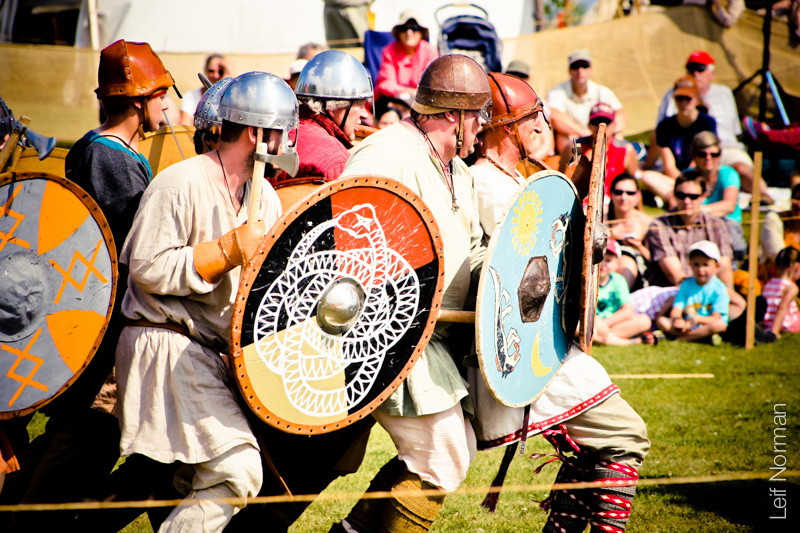VIKINGS AND FRISNOK AND BANDS, OH MY!
Islendingadagurinn showcases the best parts of Iceland and New Iceland
Islendingadagurinn: a word few of us can say but an iconic festival all of us can enjoy. On July 31 to Aug. 3, the Icelandic Festival of Manitoba will celebrate its 126th year of festivities, making it the oldest festival in Manitoba and one of the oldest ethnic festivals in North America.
“I’ve never missed an Icelandic Festival. I’ve been to every single one since I was born, and there’s a lot of my friends and a lot of my family who can say the same thing,” Robbie Rousseau, vice-president of Islendingadaggurin’s organizing committee, says.
The festival was first hosted in Winnipeg in 1890 and moved to Gimli, an hour north of Winnipeg in a region known as New Iceland, in 1932. According to Statistics Canada, Manitoba accounts for the largest Icelandic population outside of Iceland. Icelandic Canadians comprise about 2 per cent of the Manitoban demographic.
“This is one of the only places in the world that an Icelander can come, and when they say they’re an Icelander, people know what they’re talking about [and] will say, ‘I know another Icelander!’” Rousseau says.
Icelandic Festival, he says, has an extremely close relationship with Iceland. “The government of Iceland sends a representative each year. Last year it was the Minister of Foreign Affairs. This year, the bishop of the Church of Iceland is coming.”
Islendingadagurinn is host to a colourful array of activities that extol Icelandic culture and entertain its guests – and all for virtually no cost or simply no cost at all. Viking enthusiasts have opportunities to learn about tradition through the heritage pavilion, cuisine, musical acts, and historical demonstrations.
“The Viking Village is always fun. There’s 100 people that come from all across North America and live as Vikings for five days on the hill,” Rousseau says. Reenactors demonstrate aspects of traditional Viking life, notably weapon usage and warfare tactics.
Live music, a relatively new addition to the festival, is meant to showcase Icelandic and Canadian talent. EMBASSYLIGHTS, a band comprised of both Canadians and Icelanders, is set to hit the stage. Work on their album began in Reykjavik, Iceland, but it was recorded in Banff. The release party was in the Canadian Embassy in Iceland.
“[They] really spoke to what the Icelandic Festival strives to be. I think it will be a very collaborative year onstage,” Rousseau says.
If free Viking battles and live music aren’t enticing enough, then the casual festival-goer could amuse themselves otherwise. If you like being active, consider the beach volleyball tournament, shot-put competition, 10-mile road race, or family fun run. Perhaps you like friendly competition - try the sandcastle contest or play Big Games. There’s even a tournament dedicated to Frisnok, a game in which competitors try to knock their opponent’s beer off of a post by throwing a Frisbee at it.
Whether you’re one of the many Icelandic Manitobans or simply a Viking enthusiast, an Islendingadagurinn regular or a curious newcomer, you’re sure to be entertained by a festival that has thrived for over a century.
“We’re really the granddaddy festival of festivals in Manitoba, being 126. We’re an hour north of the city of Winnipeg on the western shores of the eleventh largest freshwater lake in the world. There’s a really big beach. Ninety-five per cent of the things that happen at the festival are free or basically free,” Rousseau says, proudly. “There’s a Ferris wheel and a Zipper and a Sizzler. There’s bands from Iceland and all across Canada. There’s Vikings. And if you’re a health nut, you can run a ten-mile race.”
And if you’re not a health nut, you can play Frisnok.
Part of the series: The 7th Annual Summer Festival Guide
Published in Volume 69, Number 27 of The Uniter (June 3, 2015)







